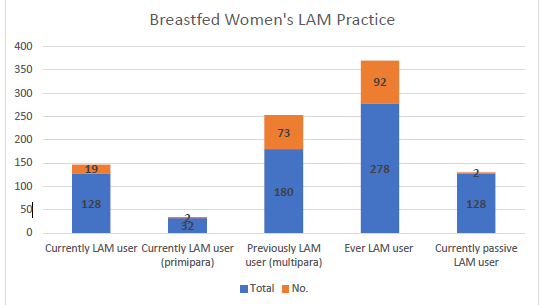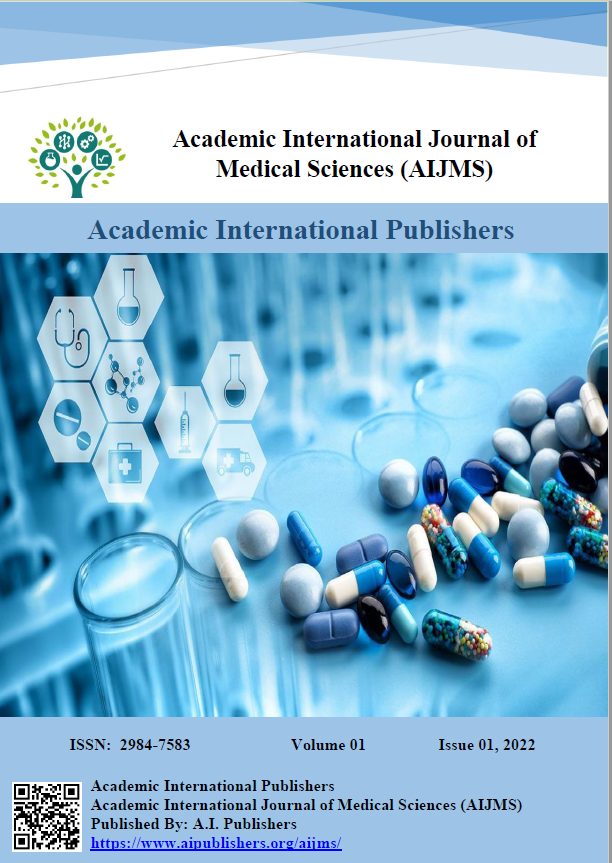A Cross-Sectional Study Investigates the Use of Lactational Amenorrhea for Contraception Among Women
DOI:
https://doi.org/10.59675/M227Keywords:
Lactational Amenorrhea Method (LAM), Natural contraception, Breastfeeding practices, Postpartum family planning, Sociodemographic influencesAbstract
Background: The Lactational Amenorrhea Method (LAM) is a natural contraceptive technique that combines breastfeeding with family planning, particularly for postpartum women. This study explores the prevalence, accuracy, and sociodemographic influences on LAM usage among women attending a health center.
Methods: A cross-sectional study was conducted among 300 postpartum women aged 15–45 years with at least one living child under five years old. Data collection involved structured interviews using a questionnaire covering sociodemographic characteristics, breastfeeding practices, and LAM usage. Statistical analysis included descriptive statistics and logistic regression to identify factors influencing LAM practice.
Results: Among participants, 42.7% were currently breastfeeding, and 33.1% of women who had ever breastfed reported using LAM for contraception. However, only 9.8% adhered to the ProperLAM criteria, while 90.2% practiced it incorrectly, leading to a 30.1% unintended pregnancy rate among inProperusers. Rural residence and lower educational attainment were associated with higher LAM usage. Non-working women also demonstrated significantly higher adoption rates compared to working women.
Conclusion: This study identified mothers who had at least three children as being more likely to practice LAM in rural areas. Thus, the health providers would encourage mothers to breastfeed and dispel any misinformation with effective counseling on the lactational amenorrhea method
References
Starbird E, Norton M, Marcus R. Investing in family planning: key to achieving the sustainable development goals. Global health: science and practice. 2016;4(2):191-210.
Van der Wijden C, Manion C. Lactational amenorrhoea method for family planning. Cochrane database of systematic reviews. 2015(10).
Huang Y-M, Merkatz R, Kang J-Z, Roberts K, Hu X-Y, Di Donato F, et al. Postpartum unintended pregnancy and contraception practice among rural-to-urban migrant women in Shanghai. Contraception. 2012;86(6):731-8.
Maternal I. Maximizing synergies between maternal, infant, and young child nutrition and family planning. 2011.
Ahmed S, Norton M, Williams E, Ahmed S, Shah R, Begum N, et al. Operations research to add postpartum family planning to maternal and neonatal health to improve birth spacing in Sylhet District, Bangladesh. Global Health: Science and Practice. 2013;1(2):262-76.
Khella AK, Fahim HI, Issa AH, Sokal DC, Gadalla MA. Lactational amenorrhea as a method of family planning in Egypt. Contraception. 2004;69(4):317-22.
Lindblad V, Melgaard D, Jensen KL, Eidhammer A, Westmark S, Kragholm KH, et al. Primiparous women differ from multiparous women after early discharge regarding breastfeeding, anxiety, and insecurity: A prospective cohort study. European journal of midwifery. 2022;6.
Oberfichtner K, Oppelt P, Fritz D, Hrauda K, Fritz C, Schildberger B, et al. Breastfeeding in primiparous women–expectations and reality: a prospective questionnaire survey. BMC Pregnancy and Childbirth. 2023;23(1):654.
Mohamed MJ, Ochola S, Owino VO. Comparison of knowledge, attitudes and practices on exclusive breastfeeding between primiparous and multiparous mothers attending Wajir District hospital, Wajir County, Kenya: a cross-sectional analytical study. International breastfeeding journal. 2018;13:1-10.
Valdés V, Labbok MH, Pugin E, Perez A. The efficacy of the lactational amenorrhea method (LAM) among working women. Contraception. 2000;62(5):217-9.
Kazi A, Kennedy KI, Visness CM, Khan T. Effectiveness of the lactational amenorrhea method in Pakistan. Fertility and sterility. 1995;64(4):717-23.
Alo OD, Daini BO, Omisile OK, Ubah EJ, Adelusi OE, Idoko-Asuelimhen O. Factors influencing the use of modern contraceptive in Nigeria: a multilevel logistic analysis using linked data from performance monitoring and accountability 2020. BMC Women's Health. 2020;20(1):191.
Birabwa C, Bakkabulindi P, Wafula ST, Waiswa P, Benova L. Knowledge and use of lactational amenorrhoea as a family planning method among adolescent mothers in Uganda: a secondary analysis of Demographic and Health Surveys between 2006 and 2016. BMJ open. 2022;12(2):e054609.

Downloads
Published
Issue
Section
License
Copyright (c) 2024 Academic International Journal of Medical Sciences

This work is licensed under a Creative Commons Attribution 4.0 International License.





